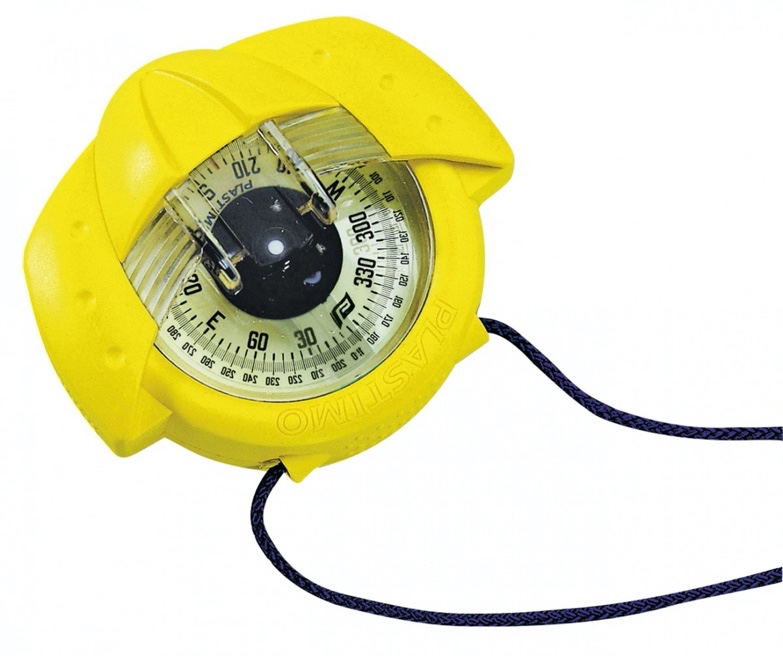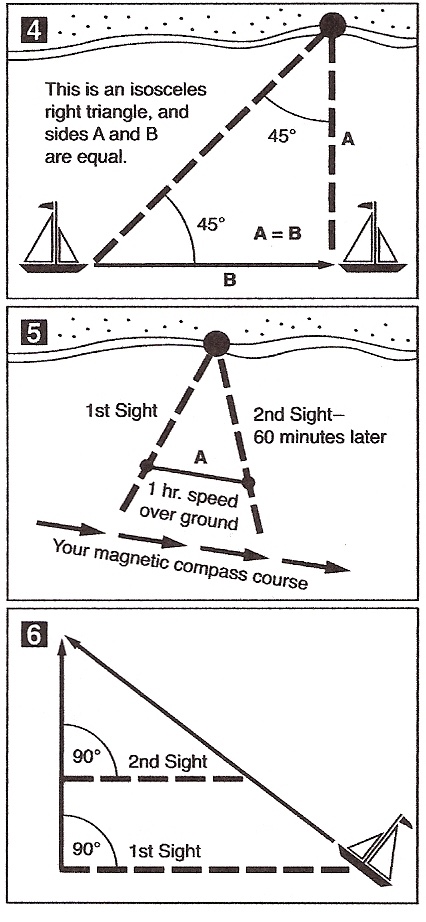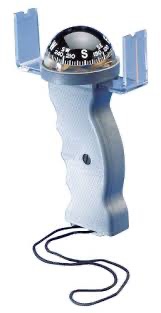A Hand Bearing Compass or Sighting Compass is mainly used when on a boat or when you are trying to take a bearing while moving; they can be used side by side. It is a compact magnetic compass capable of one-hand use and fitted with a sighting device to record a precise bearing or azimuth to a given target or determine a location. It is used to sign a bearing, and that bearing will be the one you would have to take if you wanted to head toward that object.

A hand bearing compass is used to measure the magnetic direction of sighted objects relative to the user. A steering compass tells you where you are going, but the hand bearing compass tells you where to go. Unlike a GPS receiver that does the same–perhaps quicker, more conveniently, and more precisely–the hand-bearing compass does not rely on electrical power or satellite reception. It is a good backup, and you should always have at least one in every boat. They are mainly used for racing sailors to see who is sailing faster on the same tack or if you are trying to overtake a ship or boat so you can intercept it.
How they work
A hand bearing compass allows you to take bearings of distant objects, which you can then transfer to a paper chart to create plot lines. Taking bearings of at least two 45 or more degrees apart results in intersecting lines on the chart, giving a position fix. To get the most accurate position, just like on land, you should try and take bearings of three different objects.

Different styles
We offer several different hand bearing compasses, either in “hockey puck style” or with pistol grips. High-end binoculars also come with bearing compasses, and many boaters prefer a good set of binoculars over a hand bearing compass because they’re easy to use.
How to take a bearing
To use an arm’s-length compass (usually with a pistol grip), put the lanyard around your neck to stabilize the unit. Hold the compass at eye level, then line up the V-notches in the sighting vanes on the top of the compass with the desired object; now check the bearing on the compass card. If this sounds like juggling while walking across the street, you feel the same way we do. It can be tough to keep compass and sights lined up and checking some small numbers all at the same time. Add to that the motion of a boat in a seaway and poor visibility, and you face long odds of taking an accurate bearing.

A better choice is a hockey puck style compass with an infinity prism held up to your cheek and lets you see across the top of a small prism. When you focus on the object in the distance, the prism projects the bearing into your field of vision, so you don’t have to shift your eyes. Object and bearing are in focus at the same time, which is a tremendous asset for taking accurate bearings in rough conditions.
Operating a digital compass is very much like taking a snapshot. You use the unit’s aiming system to take the sight, then press a button. The compass stores the bearing in electronic memory for future recall.
Avoiding a Collision
Take a bearing upon first sighting another approaching vessel, like a ship. Take a second bearing a few minutes later and repeat at regular intervals. If the approaching ship’s bearing remains the same, you are at risk of a collision. If their bearing has changed, rotate, so you are sighting along the original bearing. If you’re now looking at the water in front of the ship, you’ll pass ahead of it. Sighting behind the vessel means it will pass ahead of you.
What to look for
• Compactness: Models that are comfortable to wear around your neck on a lanyard and fit easily in a pocket so that you can keep them nearby.
• Night Lighting: Like other navigation instruments, bearing compasses should have night-lights. Some use small battery-powered lamps. Others have glow-in-the-dark lighting, which uses small quantities of photosensitive or radioactive gas. We like this type best because it is ready at a moment’s notice, and never needs charging or new batteries.
• Accuracy: A precisely graduated card and excellent damping are critical for obtaining accurate sights. Most people can get a bearing accurate to 2-3 degrees on a moving boat using a well-damped, infinity prism compass that is held near the cheek. In a seaway, pistol grip compasses that are held at arm’s-length are probably accurate to about 10 degrees. Sources of error that affect your bearing’s quality include inaccurate aiming, violent motion, steel-rimmed glasses, and bad visibility.
SCUBAPRO Sunday is a weekly feature focusing on maritime equipment, operations and history.


Can never learn too much nav no matter what field you’re in. The transferability from land, mountain, sea and air hugely improves each other. Good nav can be a rare thing but not that hard to develop.
Now if I could figure out how to navigate via diving. My “kick count is different in the same body of water going the same direction.
Joey i did this article about figuring out your pace a while back. I hope it helps. Also one thing that gets people is if you’re concentrating and only counting on 1 foot try counting bolts this way you’re not focused on 1 foot and you tend to kick that one down harder than you do the other one which will make you offset
https://soldiersystems.net/2020/08/30/scubapro-sunday-knowing-your-pace/
Joey i did this article about figuring out your pace a while back. I hope it helps. Also one thing that gets people is if you’re concentrating and only counting on 1 foot try counting both feet this way you’re not focused on 1 foot and you tend to kick that one down harder than you do the other one which will make you offset
https://soldiersystems.net/2020/08/30/scubapro-sunday-knowing-your-pace/